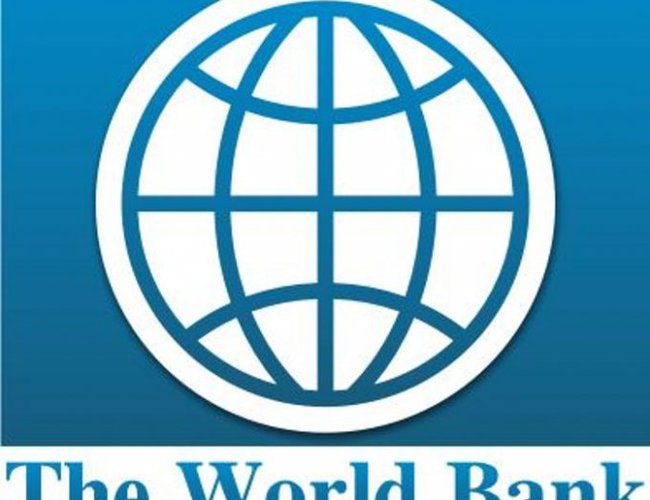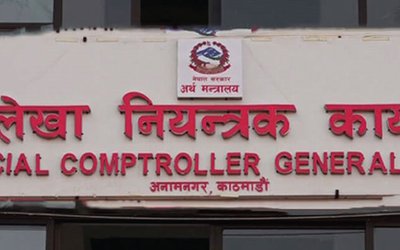
Comprehensive Reforms Can Help Nepal Escape Low-Growth Trap, says new World Bank Report Recommendations include 4-pronged approach to boost investment and accelerate productivity
Despite rapid reduction in poverty, Nepal’s development path is not helping it escape a low-growth trap, says the World Bank in a new report, Climbing Higher: Toward A Middle Income Nepal, released today. Without comprehensive reforms to address its long-standing challenges, the report says Nepal will probably not become a lower-middle-income country before 2030.
Nepal’s recent history of development is marred by a paradox, notes the report. Many countries in the world have experienced rapid growth but modest poverty reduction, as income has increasingly concentrated in the hands of the wealthy. Nepal, however, has the opposite problem—modest growth but brisk poverty reduction, it says. The country has halved the poverty rate in just seven years and witnessed an equally significant decline in income inequality. Yet, Nepal remains one of the poorest and slowest-growing economies in Asia, with its per capita income rapidly falling behind its regional peers and unable to achieve its long-standing ambition to graduate from low-income status, it says.
The current state of Nepal’s economy not only reflects the enormous obstacles to development, but also poor policy choices that have resulted in weak performance of the large agricultural sector, low public investment and capital accumulation, and low productivity growth, according to the report. During the past 45 years (1970–2014), Nepal grew at an average annual rate of 4 percent, while the growth rate of per capita income was the lowest in South Asia, averaging just 2 percent during this period.
Given this backdrop, it is not surprising that outward migration has grown in importance, especially in the post conflict period. Large-scale migration solves several problems for Nepal. For example, it alleviates unemployment; enables greater consumption; and leads to higher tax collection, given the high dependency of taxation on imports (currently generating half of all revenues). But large-scale migration is not a sign of strength, but a symptom of deep, chronic problems, says the report. Perhaps the most detrimental aspect of large-scale migration is that it relieves the pressure on policy makers to be more accountable and to deliver results, it says.
“All these factors combined mean that Nepal could be stuck in a low-growth, high-migration equilibrium for years to come,” said Damir Cosic, the World Bank’s Senior Economist for Nepal and lead author of the report. “A systematic assault is needed to break the vicious cycle and create the right balance between job creation at home and exports of labor,” he said.
Marginal interventions are unlikely to help break the self-reinforcing dynamics that have kept Nepal in a low-growth, high-migration trap, the report says. It recommends a comprehensive approach that will both boost investment and accelerate productivity.
The Banks Recommendations
1. Breaking down policy barriers: To tackle the persistent challenges of low investment and weak productivity, Nepal needs to dramatically restructure its public investment program; intensify the level of competition in the domestic market in sectors such as transport, logistics, and telecommunications; reduce the cost of doing business; and steadily integrate the economy with the rest of the world.
2. Building new sources of growth: Unleashing large investments in hydropower would be a game changer for Nepal. It would not only lead to massive new investments and improved productivity, but it has the potential to lift wages significantly and help to partially reverse migration and increase competitiveness in downstream industries.
3. Revitalizing existing sources of growth: Reforms in agriculture, which account for one-third of GDP and two-thirds of the labor force, are key to further poverty alleviation, improving productivity and releasing labor for new sources of growth.
4. Investing in people: Nepal is in the midst of a demographic transition. As a result of lower fertility rates, the share of the population that is working age is now greater than the share of the population that is not. This is the demographic dividend. To fully capture the benefits of the demographic dividend, investing in the skills of Nepali youths is imperative. Putting more human capital to productive use in Nepal is critical for a stronger and more sustainable growth path in the future.
“History teaches us that Nepal has undertaken bold and sweeping reforms before, and it can do so again,” said Takuya Kamata, the World Bank’s Country Manager for Nepal. “Those reforms were underpinned by the transition to democratically elected governments that also gave the people a sense of new purpose. Today, they serve as a stark reminder that bold and challenging reforms in Nepal are indeed possible,” he said.
- TANAHU HYDROPOWER PROEJCT: A Significant Achievement
- Apr 15, 2024
- AMBASSADOR HANAN GODAR: Sharing Pain With A Nepali Family
- Mar 30, 2024
- VISIT OF KfW AND EIB TO NEPAL : Mission Matters
- Mar 25, 2024
- NEPAL BRITAIN SOCIETY: Pratima Pande's Leadership
- Mar 24, 2024
- NEPAL ARMY DAY: Time To Recall Glory
- Mar 15, 2024
















